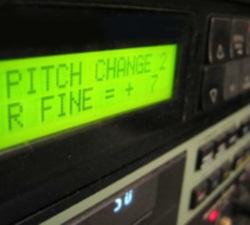
Look for a delay device that has a tap feature, preferably a unit that allows you to set the tap using a footswitch. Tapping the switch once sets the counter to zero, tapping it a second time starts a clock counting in milliseconds, and tapping it a third time stops the clock and sets the delay time between repeats to the value on the clock.
If I can tap my foot three times to the beat of a song – something my degree in music and 18 years of playing in bands has allowed me to master—then I can quickly and accurately set the delay time for the song. Phasing, flanging, and chorusing are various examples of time modulation. The signal is messed with in the time domain, and then mixed with the original to produce the result.
The most powerful effect of the three is flanging. The term came from how the effect was originally created. As the story goes, on a Jimi Hendrix recording project, it was discovered that a powerful phase shifting effect could be created by listening to the output of two tape decks simultaneously.
You start by recording the output of the multi-track mix simultaneously onto two reel-to-reel stereo recording decks, known as 2-tracks. Then set the monitoring switches so you listen to both of those 2-tracks together – something that wouldn’t ordinarily make sense to do. They discovered that by having someone rest their thumb on the flange of the supply reel on one of the two decks, it would delay the playback signal of that source.
With the delayed signal arriving slightly out of phase with the other, God’s laws of physics says that phase cancellations will occur. That is, some frequencies will cancel, while others will be increased.
If you were only listening to the deck that you were messing with in time, you wouldn’t notice much of a change. The impact comes when you hear both of them together. Phasing is similar in nature to flanging, but not as strong of an effect.
If you think about it, both are created by varying the delayed side of the signal with a very low frequency oscillator, cyclically slowing down the signal and then bringing it back to normal speed. Chorusing is basically the same circuit, but instead of modulating the time domain of the signal with a low frequency oscillator, it’s modulated with pink noise.
Something I haven’t mentioned up to now is the dry-to-wet ratio, sometimes labeled “mix” on the front panel of an effects device. A totally reverberant sound might be cool for a special effect, but not for your general reverb use. And the output of a digital delay unit wouldn’t make much sense without the listener hearing the original sound source.
